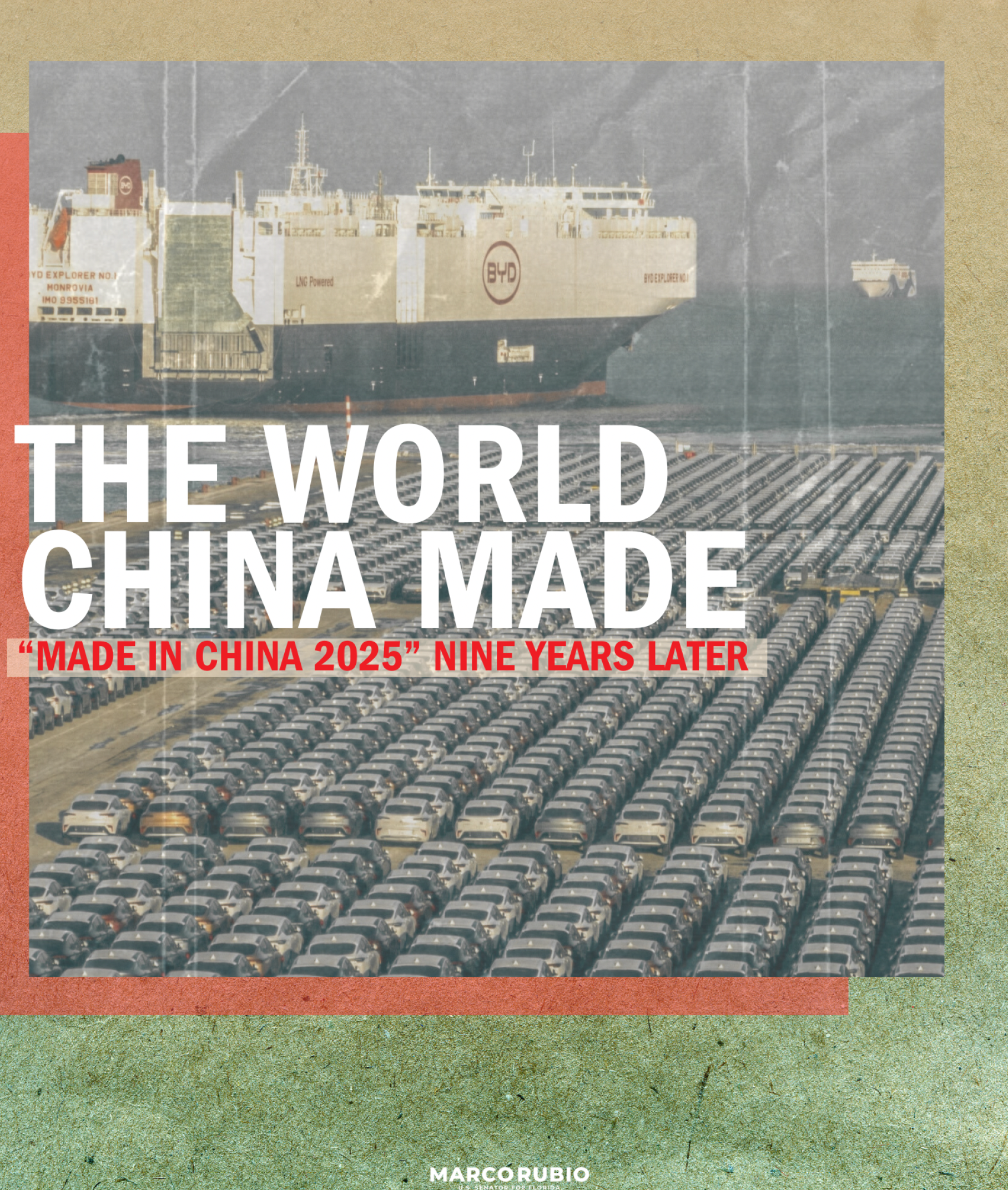Report on Chinese Manufacturing Strategy
The introduction of the report is as follows:
In 2019, the Office of Senator Marco Rubio released a report, “Made in China 2025 and the Future of American Industry,”1 which raised the alarm about China’s ambitious plan, “Made in China 2025” (MIC2025), to overtake the United States in high-value, high technology sectors. Now, with 2025 looming, it is time to assess how China has done.
Since it was unveiled in 2015, MIC2025 has undergone changes in marketing and emphasis. The changes in marketing have occurred in response to external criticism by China’s trading partners. The policy has gone underground, communicated in new slogans away from the glare of international media attention. The changes in emphasis reflect China’s experience with industrial policy, as it shifts additional resources and focus to sectors that are succeeding. Despite these changes, the main goals of the strategy remain the same: turn China into a “manufacturing powerhouse,” make the country self-reliant, and achieve technological leadership, supply chain dominance, and global economic supremacy.
This report finds that China has reached, or is near to reaching, the technological cutting edge in most of the sectors it has targeted. Of the 10 sectors targeted by MIC2025, China can credibly claim to be the world leader in four (Electric Vehicles, Energy and Power Generation, Shipbuilding, and High-Speed Rail); China is therefore shaping up to be a superpower of green energy and advanced logistics, often in areas of technology with obvious military application. In five sectors, China has made substantial progress toward the technology frontier, but is not yet a leader: Aerospace and Aviation, Biotechnology, New Materials, Robotics and Machine Tools, and Semiconductors. In just one sector, Agricultural Machinery, has China fallen short of its aims. If Xi Jinping were a fund manager, he would have every reason to be pleased with the performance of this portfolio. China’s investments have generated outsized returns in not one, but several sectors.
In addition to targeting high-tech sectors, MIC2025 included a variety of other macro goals. It is difficult to assess China’s performance using these goals, though generalizations can be made. In sum, China is by far the world’s leading exporter, and the composition and destination markets of its exports are shifting in response to its rise and the world’s reaction to that fact. China has built a formidable system for research and development, though the quality of its research is uneven. China has produced household-name brands, but far fewer than the scope of its industrial base would suggest. China has a highly connected and automated industrial base and is the world leader in the manufacture of “green” products, though its integration of those systems into its electrical grid is incomplete.
The developed world is accustomed to looking down on China as a second-rate power. The default attitude is that we have specialized knowledge and abilities that China lacks; that we are the teacher, China the pupil. This position naturally lends itself to a merely defensive strategy, to keep China from stealing or otherwise obtaining what we already have. It is also outdated, limited to a shrinking number of sectors where we retain genuine and significant advantages. A defensive strategy is still warranted to prevent China from preying on us further. But it cannot be our only response.
The United States must act now to avoid living in a world where China is the teacher, and we are the pupil. Unfortunately, this is the world China is making, in part through MIC 2025.
This report from the Office of Senator Marco Rubio, examines China’s “Made in China 2025” industrial strategy. It assesses the strategy’s progress toward its stated goals in ten strategic industries, eight “strategic tasks and priorities,” and other areas like innovation, smart manufacturing, branding, and sustainability.
The report argues that China has made significant progress in many sectors, achieving technological leadership in some, making substantial progress in others, and surpassing the United States in areas like shipbuilding and renewable energy production.
The report highlights China’s successes and growing challenges as it seeks to achieve global economic supremacy.

